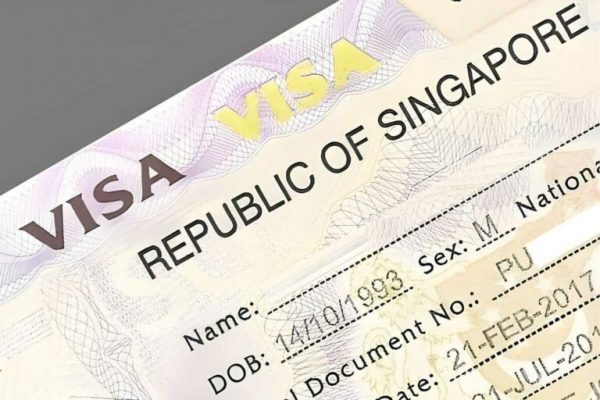Working in an international workplace brings exciting opportunities to learn from diverse perspectives, but it also comes with real challenges. One of the most important challenges is navigating cultural differences that influence how people work, communicate, and collaborate. These differences can lead to misunderstandings if not managed properly. However, with the right approach, you can turn these cultural differences into strengths.
Learning to navigate and appreciate different cultural norms helps you build stronger relationships, become more effective at teamwork, and grow professionally in any global environment.
Understand What Cultural Differences Look Like
Cultural differences go beyond language and holidays they shape how people think, behave, and interact in the workplace. Recognizing these differences is the first step toward working more effectively across cultures.

Key areas where cultural differences often appear:
- Communication Styles: In direct communication cultures (like the U.S., Germany, or the Netherlands), people value honesty and straightforwardness. In indirect cultures (such as Japan, China, or many Latin American countries), people often communicate in a more subtle, polite manner to maintain harmony. Knowing the preferred style helps you avoid misinterpreting intentions.
- Time Orientation and Punctuality: Cultures vary in how they view time. In countries like Switzerland or Japan, being exactly on time is seen as a sign of respect and efficiency. In contrast, countries with a more relaxed attitude toward time (like Brazil or India) may see slight delays as normal and not disrespectful.
- Attitudes Toward Hierarchy and Authority: In some cultures, employees expect decisions to be made by senior management, and questioning authority is uncommon. In others, open dialogue and flat hierarchies are encouraged. Understanding the structure helps you know when and how to speak up.
- Group vs. Individual Orientation: Individualistic cultures often reward personal achievement, while collectivist cultures emphasize group harmony and shared responsibility. This affects how credit is given, how people handle conflict, and how decisions are made.
- Workplace Etiquette and Norms: Even things like giving feedback, sharing ideas, dress codes, lunch breaks, or acceptable humor can vary widely. These small details can have a big impact on how you’re perceived.
By being aware of these areas, you can avoid missteps and show greater cultural sensitivity in your day-to-day work.
Read: Friendly USA Universities With Generous Scholarship Policies
Practice Active Listening and Observation
Before jumping in with your own approach, take time to understand how things are done in your new environment. Observation and listening are powerful tools, especially when you’re the newcomer to a multicultural team.
How to observe effectively:
- Pay close attention to verbal and nonverbal cues: Notice how people express themselves, how they handle disagreements, and what they do in meetings or group settings.
- Watch how respect is shown: Do people bow, shake hands, or use formal titles? Understanding these gestures can help you respond appropriately.
- Don’t assume your way is the “right” way: Even if something seems unusual or inefficient to you, it might be rooted in values or traditions that serve a purpose.
- Use silence as a learning tool: Sometimes the best way to understand is by simply watching and listening without judgment.
This thoughtful approach shows humility and helps you build credibility while learning how to integrate smoothly into your team’s culture.
Communicate Clearly and Respectfully
Effective communication is the foundation of any workplace relationship, especially in an international setting where misunderstandings are more likely. Being mindful of how you speak and write can make a big difference.

Strategies for clear communication:
- Avoid idioms, slang, or cultural references: Say “let’s meet later” instead of “let’s touch base.” Use phrases that are universally understood.
- Speak at a measured pace: Especially in meetings, speaking too quickly can make it hard for non-native speakers to follow.
- Keep sentences short and to the point: Avoid overcomplicated language or unnecessary jargon.
- Use visuals when possible: Charts, outlines, and summaries help reinforce messages and reduce confusion.
- Encourage feedback: Ask others if they understood and invite questions or comments to confirm clarity.
Respectful tone and professional language create an environment where everyone feels safe and valued.
Read: USA Immigration Without IELTS: Here’s How Thousands Are Doing It
Adapt Without Losing Yourself
Working across cultures requires flexibility, but that doesn’t mean abandoning your identity or values. The key is to find a way to adapt so that collaboration works without compromising who you are.
How to balance adaptation:
- Learn how your team prefers to operate: Observe norms around communication, meeting structure, and how decisions are made.
- Adjust your approach where necessary: If your usual way of working clashes with the team’s, consider shifting your method to align with the group’s expectations.
- Share your perspective respectfully: It’s okay to offer different ideas as long as it’s done in a way that values others’ input.
- Recognize cultural differences, but look for common ground: Focusing on shared goals helps bridge differences more easily.
Being adaptable while maintaining authenticity demonstrates maturity and emotional intelligence, two traits that are highly valued in global workplaces.
Learn from Mistakes and Feedback
Everyone makes mistakes when working in new cultural settings. What matters is how you respond. Misunderstandings are normal and often provide the best learning opportunities.

How to learn and grow from cross-cultural mistakes:
- Don’t take feedback personally: If someone points out a cultural faux pas, thank them and take it as a chance to improve.
- Apologize sincerely if needed: A brief, respectful apology shows accountability and professionalism.
- Ask for clarification: If you’re unsure about what went wrong, politely ask for more context.
- Reflect and adjust: Make a mental note or keep a journal of what you’ve learned to avoid repeating mistakes.
Being open to learning makes you more approachable and shows that you’re committed to personal and professional growth.
Read: The Truth About Canada’s Work Culture—What Immigrants Need to Know Before Their First Job
Build Relationships Across Cultures
Positive working relationships make collaboration easier and more productive. Investing in those relationships shows respect and helps create a sense of belonging within the team.
Ways to build cross-cultural relationships:
- Start with casual conversations: Ask about someone’s weekend, favorite food, or hobbies. Simple questions can break the ice.
- Show curiosity about others’ backgrounds: Learn about holidays, customs, or traditions that are important to your coworkers.
- Celebrate team diversity: Recognize cultural events, offer congratulations for personal achievements, or participate in group celebrations.
- Be consistent: Building trust takes time. Regular, respectful interactions matter more than grand gestures.
A strong rapport across cultures builds trust, improves teamwork, and creates a more inclusive work environment.
Use Tools and Training Available
Most companies with global teams recognize the challenges of cultural integration and offer tools to help. Taking advantage of these resources can speed up your adjustment and make you more effective in your role.
Resources that can support your success:
- Cultural awareness training: Many HR departments offer courses that explain cultural norms, workplace expectations, and communication styles.
- Translation and language tools: Apps like DeepL or Google Translate can help bridge language gaps in emails or written documents.
- Mentorship programs: Connecting with someone who has already navigated these challenges can provide personal guidance and insight.
- Online learning platforms: Courses on platforms like Coursera or LinkedIn Learning can improve your global communication and teamwork skills.
Cultural differences are not obstacles they are opportunities for growth, connection, and learning. When you take the time to understand and respect how others work, you open the door to stronger collaboration, fewer misunderstandings, and better results. By actively listening, communicating clearly, staying adaptable, and using available resources, you become a more skilled and trusted team member in any global workplace. Embrace the learning process, stay respectful, and remember: success in international workspaces starts with understanding, not assumptions.


